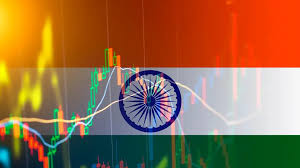
India is revamping its benchmark consumer price index to directly incorporate price data from leading e-commerce platforms such as Amazon and Flipkart. The move comes as part of a broader overhaul of inflation measurement, aimed at capturing the rapidly evolving consumption patterns of households and addressing concerns that traditional price surveys may no longer reflect how Indians shop in a digital-first economy.
With online retail accounting for a growing share of household spending, statisticians are moving to ensure that inflation readings are both timely and representative. The statistics ministry has begun collecting prices from 12 major cities and is negotiating to receive direct data feeds from platforms. These inputs will include weekly average prices across product categories, which will then be cross-checked against larger datasets to ensure accuracy and prevent distortions. This integration marks a shift toward high-frequency, digital-informed data, complementing traditional survey methods.
Adapting to Shifting Consumption Patterns
The overhaul reflects concrete changes in consumer behavior. Household consumption surveys indicate that food now represents a smaller portion of budgets, while discretionary goods, electronics, travel, and streaming services are rising in significance—categories heavily transacted online. India’s e-commerce user base has grown dramatically, with hundreds of millions of consumers shopping digitally, a figure expected to expand further in the coming years.
By incorporating online prices into the CPI, policymakers hope to better track real-world spending. E-commerce data captures dynamic pricing, promotional offers, and seasonal fluctuations that traditional surveys often miss. This will make the inflation index more reflective of contemporary consumption and allow monetary authorities to respond more effectively to emerging price pressures.
One of the key advantages of tapping digital platforms is speed. Traditional price collection is often slow and subject to reporting lags, whereas e-commerce data provides near real-time insights. This is particularly useful for categories like electronics, airfare, and subscription services, where prices can fluctuate weekly. With high-frequency inputs, policymakers can detect inflationary trends earlier and adjust interest rate policy or fiscal measures accordingly.
The ministry plans to integrate these data streams into the new CPI series, which will also see a recalibration of weightings based on updated consumption patterns. This recalibration ensures that categories like online services and discretionary goods are more accurately represented, reflecting the modern Indian household’s spending profile.
Expanding Statistical Coverage and Services Index
The CPI revamp is part of a larger statistical modernization effort. The government is preparing a new GDP series with a 2022–23 base year and has expanded employment surveys to improve the accuracy of monthly labor force estimates. Additionally, a new Index of Services Production is being designed to track output in India’s dominant services sector on a quarterly basis. These initiatives collectively aim to provide a more comprehensive and up-to-date picture of the economy, aligning inflation, output, and employment data in a cohesive framework.
The inclusion of online price data in the CPI represents a significant methodological shift. By blending traditional survey methods with digital inputs, statisticians hope to produce an index that is both robust and reflective of current spending habits. This approach will also facilitate better policy decisions, enabling the central bank and finance ministry to respond to price changes with greater precision.
Incorporating e-commerce prices is not without challenges. Online pricing is often promotional, varies across regions, and can be influenced by temporary sales or platform-specific offers. Statisticians must carefully adjust for these factors to avoid introducing bias into the CPI. Furthermore, ensuring that the data collected from platforms is representative of the broader population is critical, given that e-commerce penetration is higher in urban centers.
To address these concerns, the ministry is combining scraped data with negotiated weekly averages and cross-validating against other data sources. The updated CPI will also be weighted to reflect both urban and rural consumption patterns, ensuring that it remains nationally representative.
Global Context and Methodological Evolution
India’s move mirrors a global trend in which central banks and statistical agencies integrate digital and scanner data into official inflation metrics. Countries such as the United States and South Korea have been leveraging online prices to provide more timely, accurate insights into household spending. India’s adoption of this methodology underscores a commitment to modernizing its statistical systems while ensuring that policymakers have access to the most relevant and reliable data.
The integration of e-commerce data into the CPI will also improve transparency and policy communication. By providing a clearer, real-time view of price trends, authorities can offer more credible guidance to markets and households about inflation dynamics. This is especially important in a rapidly digitizing economy, where traditional metrics may lag behind actual consumer behavior.
India’s modernization of its inflation tracking system represents a significant step forward in economic measurement. By combining traditional surveys with high-frequency online data and expanding coverage of services and discretionary spending, policymakers aim to produce an index that is both timely and representative. This will not only enhance the precision of inflation readings but also provide stronger guidance for monetary and fiscal policy, ensuring that India’s economic statistics reflect the realities of a 21st-century consumption landscape.
(Source:www.livemint.com)
With online retail accounting for a growing share of household spending, statisticians are moving to ensure that inflation readings are both timely and representative. The statistics ministry has begun collecting prices from 12 major cities and is negotiating to receive direct data feeds from platforms. These inputs will include weekly average prices across product categories, which will then be cross-checked against larger datasets to ensure accuracy and prevent distortions. This integration marks a shift toward high-frequency, digital-informed data, complementing traditional survey methods.
Adapting to Shifting Consumption Patterns
The overhaul reflects concrete changes in consumer behavior. Household consumption surveys indicate that food now represents a smaller portion of budgets, while discretionary goods, electronics, travel, and streaming services are rising in significance—categories heavily transacted online. India’s e-commerce user base has grown dramatically, with hundreds of millions of consumers shopping digitally, a figure expected to expand further in the coming years.
By incorporating online prices into the CPI, policymakers hope to better track real-world spending. E-commerce data captures dynamic pricing, promotional offers, and seasonal fluctuations that traditional surveys often miss. This will make the inflation index more reflective of contemporary consumption and allow monetary authorities to respond more effectively to emerging price pressures.
One of the key advantages of tapping digital platforms is speed. Traditional price collection is often slow and subject to reporting lags, whereas e-commerce data provides near real-time insights. This is particularly useful for categories like electronics, airfare, and subscription services, where prices can fluctuate weekly. With high-frequency inputs, policymakers can detect inflationary trends earlier and adjust interest rate policy or fiscal measures accordingly.
The ministry plans to integrate these data streams into the new CPI series, which will also see a recalibration of weightings based on updated consumption patterns. This recalibration ensures that categories like online services and discretionary goods are more accurately represented, reflecting the modern Indian household’s spending profile.
Expanding Statistical Coverage and Services Index
The CPI revamp is part of a larger statistical modernization effort. The government is preparing a new GDP series with a 2022–23 base year and has expanded employment surveys to improve the accuracy of monthly labor force estimates. Additionally, a new Index of Services Production is being designed to track output in India’s dominant services sector on a quarterly basis. These initiatives collectively aim to provide a more comprehensive and up-to-date picture of the economy, aligning inflation, output, and employment data in a cohesive framework.
The inclusion of online price data in the CPI represents a significant methodological shift. By blending traditional survey methods with digital inputs, statisticians hope to produce an index that is both robust and reflective of current spending habits. This approach will also facilitate better policy decisions, enabling the central bank and finance ministry to respond to price changes with greater precision.
Incorporating e-commerce prices is not without challenges. Online pricing is often promotional, varies across regions, and can be influenced by temporary sales or platform-specific offers. Statisticians must carefully adjust for these factors to avoid introducing bias into the CPI. Furthermore, ensuring that the data collected from platforms is representative of the broader population is critical, given that e-commerce penetration is higher in urban centers.
To address these concerns, the ministry is combining scraped data with negotiated weekly averages and cross-validating against other data sources. The updated CPI will also be weighted to reflect both urban and rural consumption patterns, ensuring that it remains nationally representative.
Global Context and Methodological Evolution
India’s move mirrors a global trend in which central banks and statistical agencies integrate digital and scanner data into official inflation metrics. Countries such as the United States and South Korea have been leveraging online prices to provide more timely, accurate insights into household spending. India’s adoption of this methodology underscores a commitment to modernizing its statistical systems while ensuring that policymakers have access to the most relevant and reliable data.
The integration of e-commerce data into the CPI will also improve transparency and policy communication. By providing a clearer, real-time view of price trends, authorities can offer more credible guidance to markets and households about inflation dynamics. This is especially important in a rapidly digitizing economy, where traditional metrics may lag behind actual consumer behavior.
India’s modernization of its inflation tracking system represents a significant step forward in economic measurement. By combining traditional surveys with high-frequency online data and expanding coverage of services and discretionary spending, policymakers aim to produce an index that is both timely and representative. This will not only enhance the precision of inflation readings but also provide stronger guidance for monetary and fiscal policy, ensuring that India’s economic statistics reflect the realities of a 21st-century consumption landscape.
(Source:www.livemint.com)





